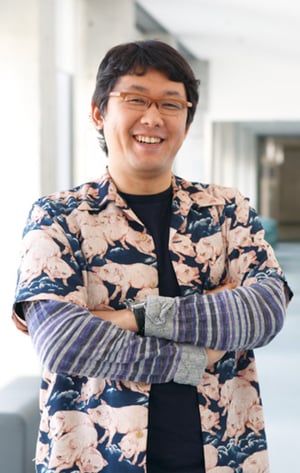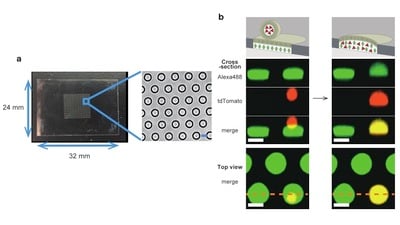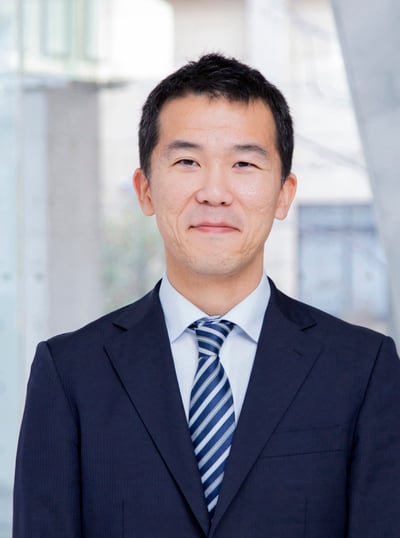Share this
Young Faculty / 008
Lecturer Kazuhito Tabata, Noji laboratory, Department of Applied Physics

<Biography>
2001 Ph.D. in Science Graduate school of natural science and technology,Kanazawa university.
2002-2005 Post-doctoral fellow, Institute of Industrial Science, The university of Tokyo.
2005-2011 Assistant professor, The Institute of Scientific and Industrial Research, Osaka university
2011-2014 Assistant professor, Department of Applied Chemistry, The university of Tokyo.
2011-2016 PREST researcher, Japan science and technology agency.
2014- Lecturer, Department of Applied Chemistry, The university of Tokyo.
2015- Assistant program manager, the Impulsing Paradigm Change through Disruptive Technologies Program. The Cabinet Office Japan.
<About the Research>
Our lives are supported by microorganisms. In fact, microorganisms have vital functions in a wide range of essential factors for life, including food production and environmental purification. Currently, there are 1030 microorganisms on the earth (109 in humans). Many can synthesize useful chemicals that cannot be synthesized by chemical reactions and can efficiently extract energy from the environment, but it is estimated that 95% of microorganisms cannot be cultured or used for applications. Because of their potential, there is active research in technology to safely exploit microorganisms. I am developing technology that reconstitutes microorganisms. One major challenge is size. Most microorganisms are only a few micrometers large, so any container can only be of several micrometers. Colleagues and I have fabricated a microchamber that is the same size as microorganisms by using optical lithography. We covered the microchamber with a lipid bilayer membrane that simulates the cell membrane and fused it to a microorganism to create a hybrid cell. In the hybrid cell, microorganisms, which are inorganic substances, and microorganisms were also fused. We found that hybrid cells have the ability to express proteins from genes. Also, we can put various kinds (DNA, RNA, protein) into the microchamber. Using this feature, in the future, we would like to develop a way to make new microorganisms with artificially created genomes.
Fig. a Microchamber device
A microchamber made on glass. Diameter 4 μm, depth 2 μm.
Fig. b Fusion of micro chamber and microorganism (hybrid cell)
It confines green fluorescent dye in the micro chamber and expresses red fluorescent protein in the microorganism. When two fusions occur, the two colors overlap and appear yellow (merge).

<Future aprirations>
I believe the design of microorganisms will have a major impact on society. To achieve this goal, people of various backgrounds are needed. I also want to play a role in the fields.
Noji Laboratory: http://www.nojilab.t.u-tokyo.ac.jp/eng/
These Related Stories
